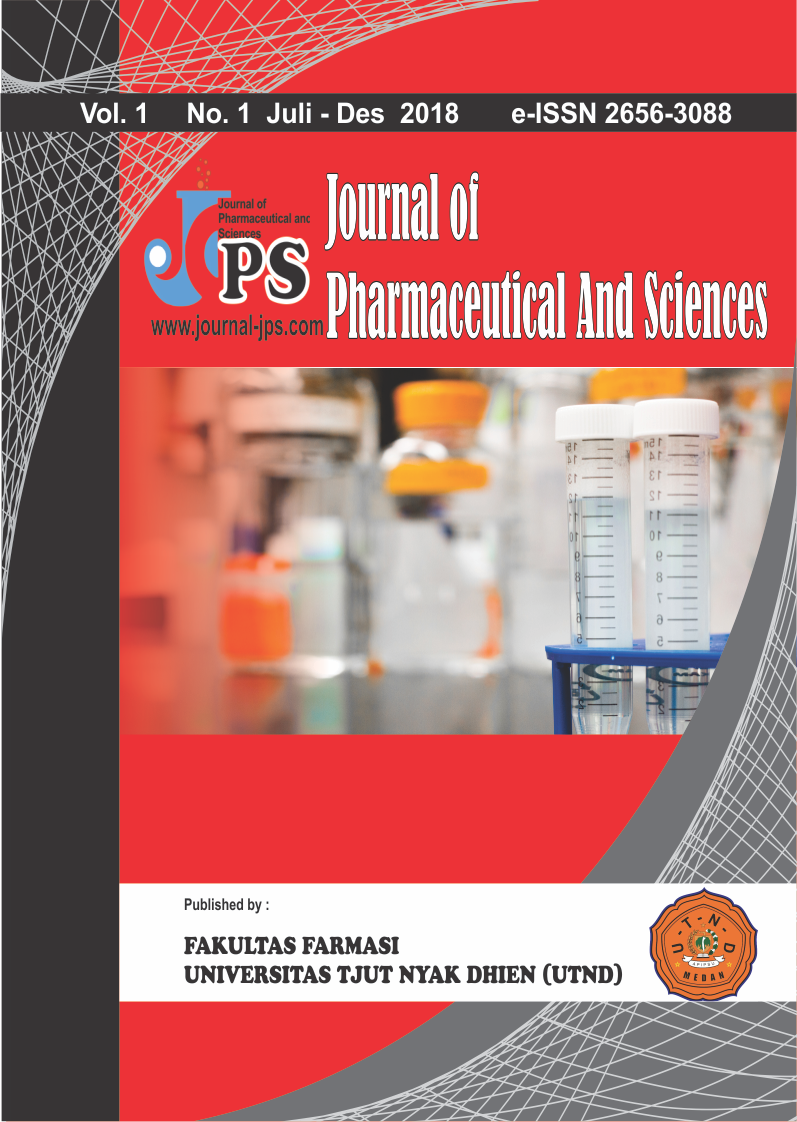Banu, K. S., & Cathrine, L. (2015). General techniques involved in phytochemical analysis. International Journal of Advanced Research in Chemical Sciene, 2(4), 25-32.
Departemen Kesehatan Republik Indonesia. (1995). Materia medika Indonesia. (Edisi VI). Jakarta: Departemen Kesehatan Republik Indonesia.
Departemen Kesehatan Republik Indonesia. (2008). Farmakope Herbal Indonesia. (Edisi 1). Jakarta: Departemen Kesehatan Republik Indonesia.
Dinata, D. I., Supriadi, D., Djafar. G., Syerliana., Wijayanti. W., & Suherman, S. E. (2015). Effect of adding granul basil (Ocimum americanum) as antioxidant in fried foods. IJPST, 2(1), 22-32.
Hanani, E., Mun’im, A., & Sekarini, R. (2005). Identifikasi senyawa antioksidan dalam spons Callyspongia sp, dari Kepulauan Seribu. Majalah Ilmu Kefarmasian. 2(3), 127-133.
Hanani, E. (2017). Analisis fitokimia. Jakarta: EGC.
Harborne, J. B. (1987). Metode fitokimia, penuntun cara modern menganalisis tumbuhan. (Edisi ke-2). Penerjemah: K. Padmawinata dan I. Soediro. Bandung: ITB.
Kementerian Kesehatan Republik Indonesia. (2014). Farmakope Indonesia (Edisi V). Jakarta: Kementerian Kesehatan Republik Indonesia.
Molyneux, P. (2004), The use of stable free diphenylpicryllhydrazyl (DPPH) For estimating antioxsidant activity. Songklanakarin J. Scitechnol. 26(2): 50-55.
Mosquera, O. M. Correa, Y. M. Buitrago, D. C. & Nino, J. (2007). Antioxsidant Activity Of Twenty Five Plant from Colombian Biodeivesity. Mem Inst Oswaldo Cruz, Rio de janeiro. 102 (5): 631-634.
Sangi, M. S., Momuat, L. I., & Kumaunang, M., (2013). Uji toksisitas dan skrining fitokimia tepung gabah pelepah aren (Arange pinnata). Manado: Universitas Sam Ratulangi.
Sarma, D. S. K & Babu, A. V. S. (2011). Pharmacognostic and phytochemical studies of Ocimum americanum. Journal of Chemical and Pharmaceutical Research. 3(3): 337-347.
Sayuti, K., & Yenrina, R. (2015). Antioksidan alami dan antioksidan sintetik. Padang: Universitas Andalas.
Sharma, R & Kumar B.S. (2013). Isolation characterization and antioxidant potential of endophytic fungi of Ocimum sanctum Linn. (Lamiaceae). Indian Journal of applied research, 3(7), 5-10.
Sunarni, T., Pramono, S. & Asmah, R. (2007). Flavonoid antioksidan penangkap radikal dari daun kepel (Stelechocarpus burahol (BI.) Hook f. & Th.). Majalah Farmasi Indonesia, 18(3), 111-116.
Winarsih, H. (2007). Antioksidan alami dan radikal bebas. Jogjakarta: Kanisius.


